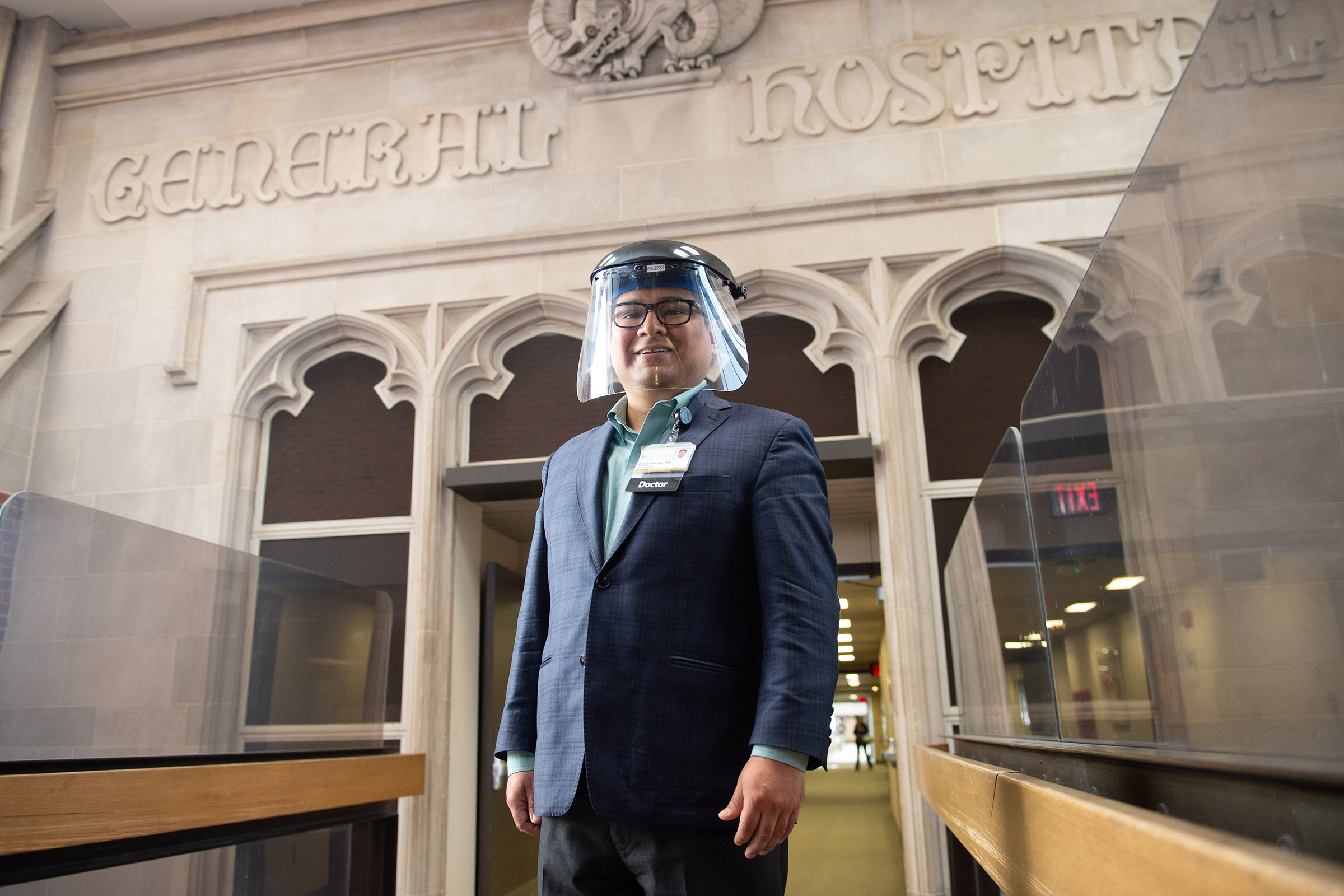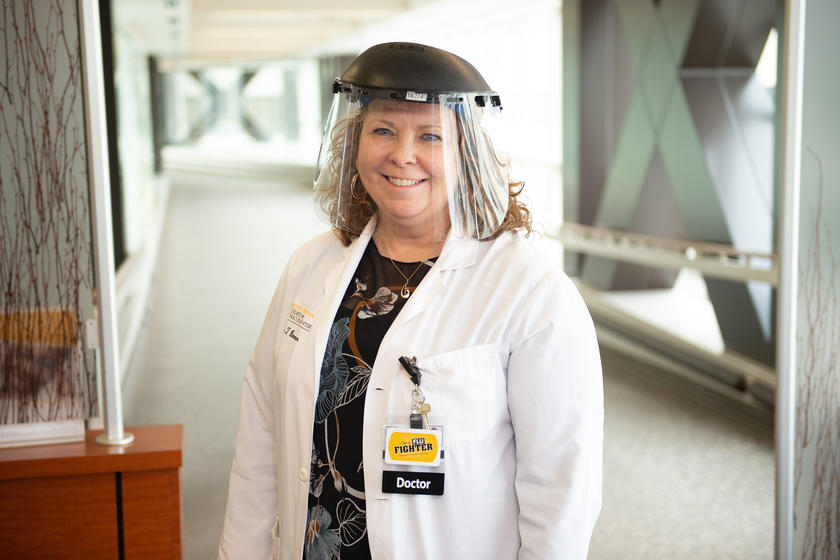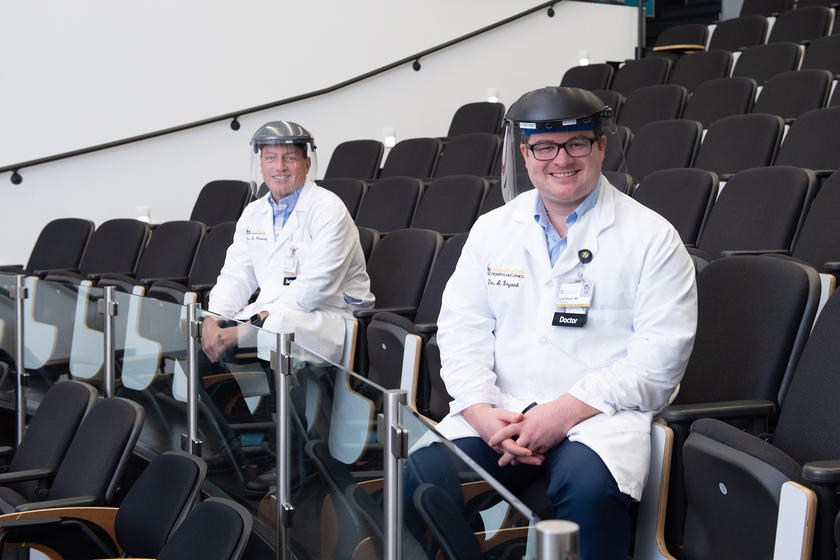Planning, preparing, and responding to COVID-19

Even on his most routine days, Jorge Salinas, MD, had to keep a lot of balls in the air. An epidemiologist and infectious diseases specialist at University of Iowa Hospitals & Clinics, Salinas leads a team of epidemiologists who put in place policies and protocols that reduce the likelihood patients will contract infections while being cared for in a UI Health Care facility. Most of the time, those are likely to be such maladies as urinary tract infections, surgical site infections, or blood infections from central line insertions.

The novel coronavirus has affected every aspect of life at University of Iowa Hospitals & Clinics. Despite these difficult times, the chief medical officer, Theresa Brennan, is seeing bright spots in her institution’s response.
But in January, a new and very large ball was added to his juggling, that being COVID-19 and its impact on the university’s health care facilities on campus and across the region.
There are no routine days anymore.
Salinas says his team first noticed reports of the COVID-19 epidemic in Wuhan, China, in early January. They stepped up their planning in mid-February when they saw the virus spreading rapidly to other countries and becoming a pandemic.
“We knew then that the introduction of the virus into the U.S. was inevitable,” he says.
Salinas and colleagues began reviewing disease-prevention measures and assessing supplies of personal protective equipment (PPE). They started developing detailed procedures and protocols for how to handle patients infected with COVID-19, from the time they come to the hospital to the time they’re discharged. With it came a change in mindset from how they approached their job in the pre-novel coronavirus era.
“Most of the time we focused on known infections,” he says. “Now, most of our time is devoted to planning and response, based on what we know about infectious diseases and what we’ve learned about COVID-19.”

Dr. Bradley Manning and Dr. Andrew Bryant discuss the University of Iowa Hospitals & Clinics program that provides direct daily care and support to patients with COVID-19 who are self-quarantined.
This response includes collaboration ensuring adequate supplies of PPE; establishing and reinforcing social distancing guidelines; screening patients, visitors, and staff at entrances; and limiting the number of visitors inside the hospitals and clinics—important measures to safely care for patients and also prevent the spread of coronavirus inside health care facilities and out in the community.
Salinas is well-prepared for his work. He came to Iowa from the Centers for Disease Control and Prevention, where he was an epidemic intelligence service officer, and he also sees patients as a clinical assistant professor of internal medicine in the Carver College of Medicine. His days start early, meeting first with Melanie Wellington, MD, the associate hospital epidemiologist, and Dan Diekema, MD, director of the division of infectious diseases, along with other members of the Infection Prevention Program team. They review existing and anticipated operational challenges and the latest epidemiological statistics, meet with other health care professionals, and then begin their visits around the health care facilities to ensure protocols are being followed.
“We have a solid team, so all the work isn’t being focused on any one person,” says Salinas, acknowledging that all of them are still working more hours than usual.
“Most of the time we focused on known infections. Now, most of our time is devoted to planning and response, based on what we know about infectious diseases and what we’ve learned about COVID-19.”
Their charge is not just for the buildings on campus and Iowa River Landing, either, but for all UI Health Care facilities around Iowa City and eastern Iowa. They also oversee a phone bank that health care professionals in UI facilities can call if they have questions about COVID-19 policies and procedures. The bank has eight phones, and he says all eight are frequently busy, even though it’s limited only to UI Health Care professionals and staff members.
But Salinas says his team can’t let COVID-19 take all their focus, especially since UI Health Care providers will start performing essential elective procedures again. Iowa Gov. Kim Reynolds’ proclamation on April 24 lifted some restrictions on elective procedures at Iowa hospitals.
“We still have patients who need other procedures, and they can still get those other infections, so we have to make sure we’re still following our protocols,” he says.